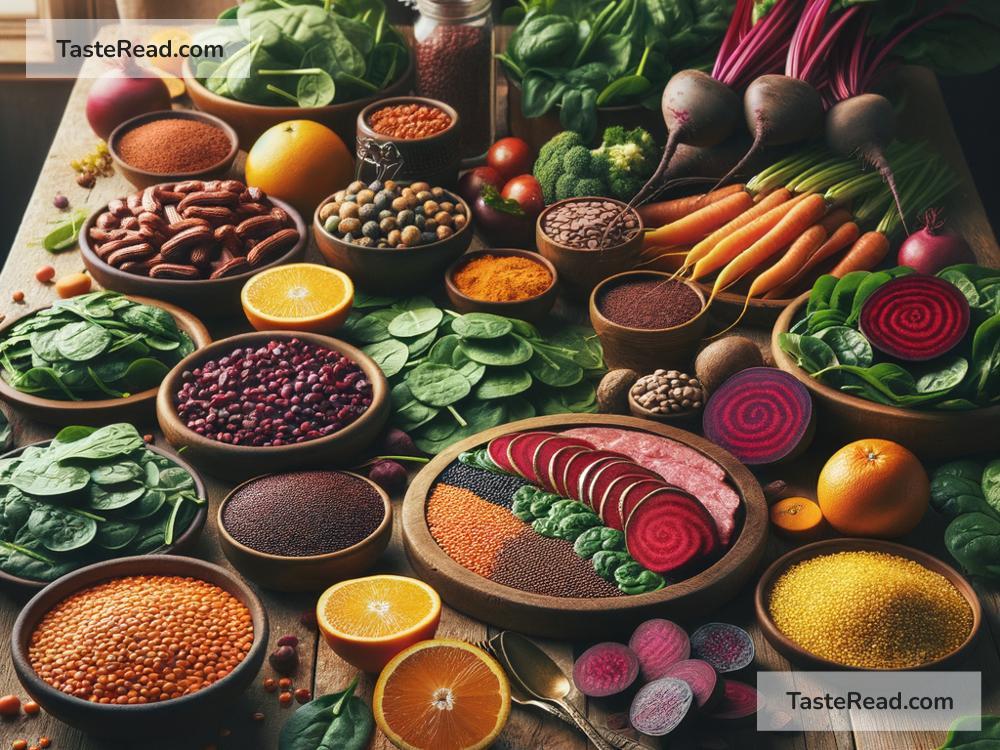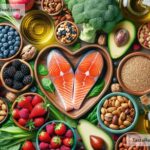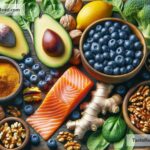Foods That Promote Healthy Hemoglobin Levels
Hemoglobin is an essential protein in our red blood cells, responsible for carrying oxygen from our lungs to every tissue and organ in the body. Maintaining healthy hemoglobin levels is crucial for overall health because low levels can lead to fatigue, weakness, dizziness, and, in severe cases, anemia. If you’re looking to boost your hemoglobin naturally through your diet, you’re in the right place! In this blog, we’ll discuss easy-to-find foods that can help keep your hemoglobin levels in a healthy range.
Why Hemoglobin Levels Matter
Hemoglobin is made up of iron and protein. If your body doesn’t have enough iron, vitamins, or other nutrients essential for making hemoglobin, your levels might drop, and this could affect your energy levels and overall well-being. Here are some common causes of low hemoglobin levels:
– Iron deficiency: The most common reason for low hemoglobin is a lack of iron in the diet.
– Vitamin deficiency: Vitamins like vitamin B12 and folate are necessary for red blood cell production.
– Chronic health conditions: Diseases like kidney problems or chronic blood loss can also impact hemoglobin levels.
The good news is that eating the right foods can naturally help support your hemoglobin levels.
Foods to Help Boost Hemoglobin Production
Let’s break down the types of foods you should focus on for improving your hemoglobin levels:
1. Iron-Rich Foods
Iron is the key ingredient in hemoglobin production. Without enough iron, your body can’t make enough hemoglobin. Here are some iron-rich options to include in your meals:
– Leafy greens: Spinach, kale, and collard greens are great sources of non-heme iron (the plant-based form of iron).
– Red meat: Lean beef and lamb are excellent sources of heme iron, which is easier for your body to absorb.
– Beans and lentils: Black beans, chickpeas, and lentils are affordable and packed with iron.
– Seafood: Shellfish like clams, oysters, and shrimp are high in iron.
– Seeds: Pumpkin seeds and sunflower seeds are small but mighty sources of iron.
2. Vitamin C Foods
Vitamin C doesn’t directly increase hemoglobin, but it plays a crucial role by helping your body absorb iron better. Pair iron-rich foods with these vitamin C-packed options:
– Oranges, lemons, and other citrus fruits
– Strawberries, blueberries, raspberries
– Bell peppers (especially red ones)
– Tomatoes
– Broccoli
For example, eating spinach salad with a squeeze of lemon juice can give you both iron and vitamin C!
3. Foods Rich in Folate
Folate, or vitamin B9, is necessary for producing red blood cells. Without enough folate, your hemoglobin levels may drop. Here are some folate-rich foods to try:
– Leafy greens like spinach and lettuce
– Avocados
– Asparagus
– Beans and lentils
– Eggs
4. Vitamin B12 Foods
Vitamin B12 also helps produce red blood cells and maintain healthy hemoglobin levels. Deficiencies in B12 often lead to anemia. Consider adding these foods to your diet:
– Dairy products like milk, cheese, and yogurt
– Eggs
– Meat, poultry, and fish
– Fortified cereals
Vegetarians and vegans may need to rely on fortified foods or supplements since B12 is mostly found in animal-based products.
5. Iron-Fortified Foods
Many everyday foods are fortified with iron, meaning iron is added to them during processing. These include:
– Breakfast cereals (look for “iron-fortified” on the label)
– Bread and pasta made from enriched wheat flour
– Rice
Fortified foods are a convenient way to boost iron intake for people with dietary restrictions.
6. Beetroot
Beetroot is often celebrated as a natural remedy for low hemoglobin levels. It’s rich in iron, folate, and antioxidants that support red blood cell production. You can enjoy beets as a salad, juice, or even blended into smoothies.
7. Dry Fruits
Dried fruits like raisins, dates, apricots, and prunes are compact snacks loaded with iron and other nutrients. These make great additions to oatmeal, yogurt, or trail mix.
8. Nuts and Seeds
Nuts such as almonds and cashews contain iron, while seeds like chia, flax, and sesame also pack a nutritional punch. Keep a small handful on hand for snacking or sprinkle them on your breakfast bowl.
9. Dark Chocolate
Good news for chocolate lovers! Dark chocolate (choose one with at least 70% cocoa) contains iron and antioxidants that can support healthy hemoglobin levels. However, eat it in moderation since it’s calorie-rich.
Lifestyle Tips to Complement Your Diet
Besides eating hemoglobin-friendly foods, a few lifestyle changes can further help boost your levels:
– Avoid excess tea or coffee during meals: These drinks contain compounds that can block iron absorption. Try to drink them between meals instead.
– Stay hydrated: Drinking plenty of water helps your body function well and keeps blood circulation smooth.
– Exercise regularly: Physical activity stimulates blood flow and ensures oxygen is delivered more efficiently throughout the body.
Final Thoughts
Healthy hemoglobin levels are vital for feeling energetic and keeping your body well-oxygenated. By eating a balanced diet full of iron, vitamin C, folate, and vitamin B12, you can naturally support your hemoglobin production. The foods we’ve shared are not only healthy but also delicious and easy to incorporate into everyday meals.
Listen to your body, and if you suspect your hemoglobin levels are low despite dietary changes, consult a doctor for further advice. A combination of a nutrient-rich diet and healthy habits can help keep you feeling strong and energized!


